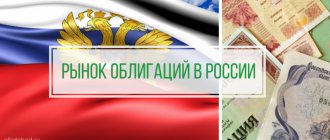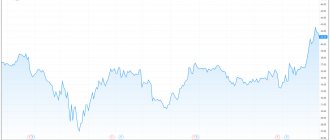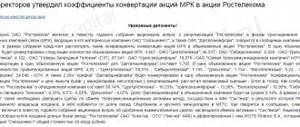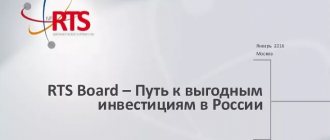What is GKO
The abbreviation GKO usually means government short-term bonds. They are zero-coupon, since the income from them comes from a discount - the purchase of securities at a cost below par. The issuer is the Ministry of Finance of Russia.
GKO trading takes place on the Moscow Interbank Currency Exchange through a specialized computer system that ensures continuous circulation of bonds. Published for a period of 3, 6 months or 1 year.
Essence of the tool
American Treasury bonds (they are sometimes called Treasuries - from the English Treasury - treasure, jewel) are a type of debt securities issued by the US Treasury through the Bureau of Public Debt. The American Ministry of Finance is called the US Treasury - hence the prefix “treasury”.
The funds received are spent by the government on a variety of government needs - payment of benefits and salaries, financing of government spending on defense, education, social programs, security, etc., payment of government officials, implementation of various federal and regional programs, etc.
In a word, US treasury bonds are a complete analogue of our Russian OFZs. And borrowing is done for the same purpose - to replenish state reserves. Well, the reliability is appropriate - payments on government bonds are guaranteed by the state itself. This means that such bonds are a priori safer than corporate or municipal ones.
In addition to reliability, American Treasury bonds are characterized by increased liquidity. The turnover of US government bonds on the interbank market is about $600 billion, so there is always something to buy and sell.
Thus, Treasury bonds are considered a conditionally risk-free instrument, as they are backed by the strength of the dollar. The stronger the US currency, the more confident Treasuries feel. But at the same time, the profitability and reliability of government bonds depends on inflation in the United States and the financial policy of the Federal Reserve System.
Development of the GKO market
The first issue of government bonds occurred in 1993. The demand for them was not high due to inflation and the impossibility of selling them to foreign citizens. For optimal trading, the following infrastructure has been created:
- Issuer - Ministry of Finance;
- As supervision over the service of dealers and the implementation of trades, the Central Bank of the Russian Federation;
- Commercial banks as official dealers;
- Trading platform - MICEX.
By 1998, the GKO market reached a profitability level of over 272 billion rubles and became the main way of financing and replenishing the state budget.
Through subsidiaries, an artificial rush was created for the purchase of bonds, which showed the stability of the securities market in Russia for foreigners. But on August 17, 1998, the country experienced a currency devaluation and a default was declared, since the yield on GKOs was more than 140% per annum.
What are GOs and what are their features?
Government bonds are securities issued by the state represented by an authorized government agency. In the Russian Federation, the issuer is the Ministry of Finance, the Central Bank of the Russian Federation; in other countries, the issue can be organized by another body, for example, the Treasury.
Debt GOs are not radically different from ordinary bonds and have the following characteristics:
- The nominal price of ruble bills, in most cases, is 1,000 rubles, for foreign currency bills - from 1 US dollar.
- Based on their duration, they are divided into long-term, medium-term and short-term.
- Only coupons are distinguished by type.
- Traded on the stock exchange.
- They are highly reliable and moderately profitable.
- Payments are made in cash or property form.
Regardless of type, government bonds are reliable securities. The state guarantees the payment of interest income and par value.
This ensures that money or property due is received on time.
What are government bonds and what types are there - video
Bonds as a means
GKOs were issued as a means to fill shortfalls in the country's budget. In order to cover and not incur losses, a new batch was produced using funds received from the previous ones. The price was minimal, which attracted investors.
At first, after inflation, GKOs were not in demand, but after the normalization of economic policy in the country, they became common securities that generate stable income.
At the initial stage, it was planned that short-term government bonds would be sold only to Russian companies and citizens, but after a noticeable increase in demand for them, it was decided to introduce foreigners into the securities market.
Reliability of investment
Note!
Government bonds are the most reliable securities in the entire debt market, and not only in the Russian one.
The risk of investing in bonds is the bankruptcy of the issuer, that is, the inability to pay the investor the coupon interest or the face value of the security.
Despite the collapse of GKOs in the past, default on government securities is unlikely today. The country's government will find a way to fulfill its obligations, even if the economic situation becomes tense.
A default, including a technical one, will entail a lot of negative consequences - a decline in the country’s image, and the active sale of bonds by Western funds.
The reliability of companies or countries is assessed based on credit ratings. Moreover, you should only trust reputable rating companies.
This year, the investment indicator has been confirmed by all members of the Big Three. S&P confirmed the rating with a stable outlook.
And Moody's, albeit belatedly, raised it from unattractive Ba1 to investment grade Baa3, also with a stable outlook.
Important: Despite current and possible future sanctions, the country’s economy has strengthened noticeably compared to 2014 and 2015.
Even a potential ban on the purchase of Russian government bonds by the West will not harm the debt market. This was confirmed by leading foreign rating agencies when forming a credit rating at the “investment” level.
Types of Treasury Bonds
There are 5 main types of US Treasury bonds:
- Treasury Bills. These are discount bonds, i.e. they do not pay a coupon - they are sold at a price below face value, and the investor makes a profit from the difference between the purchase price and redemption. The circulation period of bills (they are sometimes called treasury bills) is less than 1 year: 4, 13, 26 and 52 weeks. Denomination - from 1000 to 5000 dollars. Issues after 1984 are irrevocable.
- Treasury Notes. Sheet music is the most popular type of treasury. It is this type that includes 10-year US Treasury bonds, which are considered an indicator of the global economy. Such bonds have a fixed coupon. Repayment terms are 2, 3, 5, 7 and 10 years.
- Treasury Bonds. Long-term bonds that allow you to fix profitability for an extremely long period - 20 or 30 years.
- Treasury Inflation Protected Securities (TIPS) – Treasury bonds with a floating coupon rate. They are protected from inflation, since the coupon denomination is indexed depending on the CPI-U index - an analogue of the Russian consumer price index. Please note that it is not the coupon that changes (it is fixed), but the denomination. The higher the denomination, the higher the coupon payments (the rate remains the same). Due to their ability to offset the effect of inflation, TIPS are deservedly popular among investors. The maturity period is 5, 10, 20 or 30 years.
- Floating Rate Notes (FRNs). This is a relatively new type of American treasury, which appeared in 2014. These are two-year notes whose yield is tied to discount rates at 13-week auctions. Because of this, their market price can be either higher or lower than par.
And here’s another interesting article: History of the microfinance market from antiquity to the present day
There are also US Treasury zero-coupon bonds - these are bonds with a maturity of more than 10 years, trading at a discount, and Treasury STRIPS. These bonds have nothing to do with nightclubs. These bonds are created on the basis of ordinary treasuries with a coupon. The coupon payment guarantee is the obligation against which Treasury STRIPS are issued. The more coupons, the more STRIPS can be issued. Treasury STRIPS are used as “price swings” to compensate for market volatility during periods of drawdown.
All US Treasury bonds are also divided into:
- irrevocable – investors hold the bond until maturity;
- revocable with a call option - the issuer (state) has the right to buy back the security under the offer, which may be unprofitable for the investor;
- revocable with the right of redemption (put option) - the investor, on the contrary, can present it for redemption on a certain date.
The majority of irrevocable bonds are available on the market.
And, in order to completely confuse you and blow your mind, I’ll tell you about another classification of treasuries. There are On-The-Run and Off-the-Run types of papers. The first type is the latest bond issue, the second is all earlier ones. The latest issue is usually the most liquid, as it corresponds to the current economic situation.
How to place treasuries
Tresuries are placed during auctions, just like OFZs. An auction for bills (short issues) is held once a week, for longer ones - usually once a month or once a quarter.
During the initial placement, three categories of buyers participate in auctions:
- Direct bidders are foreign Central Banks;
- Indirect bidders – various hedge funds, non-state pension funds, banks, insurance companies, etc.;
- Dealers are dealers and brokers.
The placement is considered successful if the first two categories bought the entire issue. After this, the bonds enter the secondary market, where individuals can buy them.
Who buys US bonds?
Buyers of US government bonds can be divided into five main categories: foreign holders (non-residents), the US Federal Reserve, the US government through public pension funds and Social Security, US commercial banks, other US institutions, companies and individuals.
About a third of US bonds traded on the market are held by foreign holders, US Treasury data shows.
This is what the top five largest foreign holders of US debt looked like at the end of August 2021:
Source: US Treasury
Until 2021, Russia was one of the largest holders of US government bonds in the world. For example, from March 2021 to March 2018, Russian investments in Treasuries did not fall below $100 billion, and the record was set in October 2010, when Russia owned US government securities worth $176.3 billion and was in sixth place in the world by this indicator.
However, in 2021, amid increasing sanctions risks, Russia sold off almost all American government bonds, reducing the portfolio by almost 10 times, and since then has systematically continued to reduce the share of Treasuries in its foreign currency assets.
Thus, at the end of August 2021, the Russian portfolio of American government bonds amounted to $5.858 billion, according to data from the US Department of the Treasury. $2.657 billion was accounted for by long-term debts and $3.201 billion by short-term liabilities.
Government securities and their types (GKO, OFZ, KO, OVVZ, OGSZ)Government securities are debt securities issued by the government. Each government security receives its own name, which allows it to be distinguished from other types of securities. By issuing securities into circulation, the state is trying to solve the following problems: - financing the state budget deficit on a non-inflationary basis, that is, without additional issuance of money into circulation; — financing of targeted government programs in the field of housing construction, infrastructure, social security, etc.; - regulation of economic activity: money supply in circulation, impact on prices and inflation, on expenses and investment directions, economic growth, balance of payments, etc. Government securities should, as a rule, have two very large advantages over any other securities and assets: firstly, the highest relative level of reliability for investing funds and, accordingly, the minimum risk of loss of fixed capital and income on it, secondly, the most preferential taxation compared to other securities or areas of capital investment. Often there are no taxes on government securities on transactions with them and on income received. Unfortunately, in our country these advantages are not always available when issuing government securities. The placement of government securities is usually carried out: - through central banks or ministries of finance. The main investors, depending on the type of bonds issued, are: the population, pension and insurance companies and funds, banks, investment companies and funds; - in paper (blank form) or paperless forms (in the form of entries in accounts in authorized depositories; - by various methods: auctions, open sale to everyone at set prices, closed distribution among a certain group of investors, etc. All government-issued securities can be classified on various grounds: by type of issuer: - securities of the central government; - securities of constituent entities of the Russian Federation; - securities of state institutions; - securities that have been given the status of government; by form of negotiability: - securities whose circulation is not limited; - securities limited in circulation; by circulation period: - short-term, issued for a period usually up to 1 year; - medium-term, issued for a period usually from 1 to 5-10 years; - long-term, that is, issued for a period usually over 10- 15 years; according to the method of payment (receipt) of income: - interest-bearing securities; - discount securities that are placed at a price below par, and this difference (discount) forms the income on the bond; — indexed bonds, the nominal value of which increases, for example, by the inflation index; — winning ones, the income for which is paid in the form of winnings; - combined bonds, for which income is generated through a combination of the previously listed methods. Government short-term zero-coupon bonds (GKOs) At the beginning of 1992, the Bank of Russia began to develop and implement a project to create a modern market for government securities in Russia, which would be capable of performing the functions characteristic of similar markets in countries with market economies. At the same time, it was planned to significantly reduce the volumes and subsequently abandon direct lending to the Ministry of Finance of the Russian Federation. In the course of this work, by the beginning of 1993, conditions were created for the full functioning of the government bond market. It was decided to start issuing bonds with the issue of securities with a circulation period of three months, gradually introducing new financial instruments with a long circulation period. These securities are called government short-term zero-coupon bonds (GKOs). At the same time, it was decided to use electronic paperless technology for all types of operations. A package of regulatory documents was developed that regulated the entire range of legal relations of participants, all aspects of the technology of placing GKOs, redemption of bonds, secondary trading, work of the depositary and settlements. A computer system was deployed at the Moscow Interbank Currency Exchange to ensure this type of trading. An appropriate infrastructure was created for the functioning of the market. Its components were: — The Ministry of Finance of the Russian Federation, acting as the issuer of GKOs; — Bank of Russia, performing the functions of an agent of the Ministry of Finance of the Russian Federation for servicing the issue, a dealer, a regulatory body and an organizer of market settlements; — more than 170 official dealers carrying out their own and brokerage operations on the market; — Moscow Interbank Currency Exchange, performing the functions of a trading system, settlement system and depository. The Ministry of Finance of the Russian Federation, issuing GKOs, received the funds necessary to finance the budget deficit. These funds were borrowed on market terms. As the size of the market grew, the volume of funds raised by the issuer constantly increased. The Bank of Russia provided the organizational side of the functioning of the GKO market: it carried out the placement and redemption of bonds, prepared the necessary documents and transferred funds to the account of the Ministry of Finance of the Russian Federation. In addition, the Bank of Russia actively participated in the GKO market as a dealer. Commercial banks, financial companies, and brokerage firms acted as official dealers, pursuing their own investment goals and the goals of their clients in the GKO market. The clients were Russian and foreign legal entities and individuals. Initially, GKOs were effective for the state. However, as the volume of GKO issues grew, budget expenses for servicing this debt also increased. By the summer of 1998, they reached approximately 1/3 of all budget revenues. It became obvious that the state could not bear such expenses and the situation got out of control. In the spring of 1998, non-residents began fleeing the GKO market (they owned 30% of the total GKO issue). The default on GKOs announced on August 17, 1998 dealt a severe blow to commercial banks (whose total investment in GKOs exceeded 30 billion rubles). Many investors, including individuals, were ruined. The GKO market has practically ceased to exist. Federal loan bonds with variable coupon interest (OFZ) These bonds were issued in accordance with the General Conditions for the Issue and Circulation of Federal Loan Bonds, approved by Decree of the Government of the Russian Federation No. 458 of May 15, 1995. OFZ with variable coupon interest were registered medium-term government securities and provided their owners have the right to receive the face value of the bond upon its redemption and to receive coupon income in the form of a percentage of the face value of the bond. The issuer was the Ministry of Finance of the Russian Federation, which established for each individual bond issue its volume, the procedure for calculating coupon income, determined on the basis of the yield on GKOs, the placement date, maturity date, terms of payment of coupon income, as well as restrictions for potential owners. The amount of coupon income is calculated separately for each period of its payment and is announced for the first coupon no later than seven days before the start date of placement, for subsequent coupons, including the last - no later than seven days before the date of payment of income for the previous coupon. All transactions with OFZs, including settlements and accounting of rights to bonds, are carried out through institutions of the Bank of Russia. The placement of OFZs, like GKOs, is carried out at an auction through authorized dealers, and secondary trading is carried out on the MICEX. The first issue of OFZ with a circulation period of 378 days took place in June 1995. The financial crisis that broke out in August 1998, followed by a default, suspended the functioning of the OFZ market. The State Savings Loan (GSLO) was put into circulation in August 1995. The volume of the loan was 10 trillion rubles, which the state intended to receive before 1998 by issuing its bonds in ten series of 1 trillion rubles each. each (owners of bonds of the Russian internal winning loan of 1992 have the right to exchange them for bonds of the new loan). The SPSS was issued in documentary form, in the form of bearer bonds, with interest income, which for their first issue was equal to 102.7% per annum. Loan bonds are free to circulate, their owners can be both legal entities and individuals (residents and non-residents). Bond denominations are 100 and 500 thousand non-denominated rubles. The “settled” price of State Security Bonds depends on the day of purchase and is determined as the sum of the nominal price and the coupon income accumulated on the day of the transaction. Naturally, the market price will differ from the calculated price (it is influenced by various factors). The NHS market is currently experiencing considerable difficulties. Although payments under the NHS continue, moments of crisis in this market related to the general economic situation of the country and inflation are growing. His prospects remain unclear. Treasury obligations (KO) Their emergence is associated with the growth of state debt to enterprises in various sectors of the economy and forms of ownership. By March 1994, the debt amounted to about 11 trillion rubles, while each ruble of public debt stimulated 2-3 rubles. debts of the enterprises themselves. To solve this problem without resorting to inflationary methods, the Russian Government has set a goal of converting 10% of this debt into special debt securities. KOs became such securities. KOs are issued for a period of one year in paperless form - in the form of entries in “depo” accounts in authorized depositories. The time from issue to maturity varies from 50 to 360 days depending on the series. For all series of KOs, a single income is established - 40% per annum. Owners of KOs have the right to carry out the following operations with them: repay accounts payable, pay for goods and services without restrictions, sell them to resident legal entities and individuals, carry out collateral transactions, exchange for treasury tax exemptions and, finally, repay with interest. To carry out most of these operations, KOs must pass a certain number of endorsements for each series (3-5). The issue of KOs began in September 1994; by June 1, 1995, KOs worth 46 trillion rubles were in circulation. The KO market did not last long. By replacing cash in circulation, CBs increased inflation. Therefore, their production, including at the request of the IMF, was stopped and they disappeared from circulation. Domestic Foreign Currency Loan Bonds (OVVZ) As a result of the bankruptcy of Vnesheconombank of the USSR (VEB), the funds of legal entities and individuals were “frozen” in its accounts. According to the Decree of the President of the Russian Federation, VEB's debt to legal entities was covered by domestic foreign currency loan bonds with a repayment period of 1 to 15 years. The loan was issued in May 1993 with a total volume of $7.9 billion. Bond denominations: $1,000, $10,000 and $100,000. The bonds were issued in five series. VEB bonds are issued in certified bearer papers. The issuer of the bond is the Ministry of Finance of the Russian Federation. Part of each bond is a set of coupons on which annual interest payments are made. The coupon rate is 3% per annum and is paid on May 14 of each year. As of June 1, 1995, bonds worth $7.4 billion were placed. When exchanging VEB deposits for bonds, preference was given to commercial banks, joint ventures and charitable foundations: they were issued bonds of similar series. VEB bonds are traded both in Russia and abroad. In 1997, the monthly volume of this trade on the interbank market was $8.5–9.5 billion (the total volume of bond issues had reached $13.6 billion by that time). The main participants in trade are foreign investors. The Asian and then Russian financial crises of 1998 had a strong impact on the OVVZ market: foreign capital invested in these bonds began to flow to more prosperous regions. Now the very existence of this market is called into question. If the situation does not change and there are no additional emissions, the OVVZ market will disappear on its own. The government securities considered are the main, but not the only, securities of this kind on the Russian stock market. The securities of the USSR and the Russian domestic winning loan of 1992 are gradually leaving circulation. The market for government securities in Russia will always be dynamic, reflecting the economic and political realities existing in the country. This is evidenced by the financial crisis that erupted in August 1998. It was associated primarily with the growth of the budget deficit and the increase in public debt. In the summer of 1998, the debt reached 80% of GDP, and its interest servicing amounted to 35% of all budget revenues. The country could not bear such a burden. The devaluation of the ruble and default on the state’s internal and external debts became inevitable. This spelled disaster for the stock market. All types of government securities became worthless, and investor confidence in them was undermined. The crisis in the government securities market has become protracted, undermined the country's banking system, and worsened the situation of the population. The government is currently attempting to restore confidence and return some securities to circulation.
Treasury yield
Different classes of bonds use different benchmarks for pricing. The most common benchmark is the yield of the latest Treasury issue.
For example, the yield on the 10-year US Treasury note issued in the summer of 2021 could serve as an indicator for new issuance of 1-, 5-, 10- and 20-year bonds in 2021 - investors can understand how profitable the new issue is (On-The- Run) relative to the previous one (Off-the-Run).
Today, US Treasury yields range from 2.4% to 2.9% per annum. The longer the circulation period, the higher the income.
It is convenient to track current rates of US Treasury bonds on the website ru.investing.com/rates-bonds/usa-government-bonds. For example, at the time of writing, one-year Treasuries can bring investors 2.435% per annum, 5-years - 2.376%, and 10-years - 2.572%.
Based on the yield of basic treasuries with maturities from 3 months to 30 years, a reference bond yield curve is constructed. Since the payment dates for staggered issues coincide (for example, 5-year, 10-year, and 20-year Treasuries can be redeemed on the same day - most often the Treasury does this), the yield is interpolated.
This benchmark yield curve for US government bonds is called an interpolated yield curve (or yield curve). The smaller the difference in yield between short and long bonds, the smoother it appears.
And here’s another interesting article: What are federal loan bonds (OFZ) and how to invest in them
The yield curve values can be viewed on the US Treasury yield chart. Here, for example, is the yield of 10-year bonds over 200 years.
Risks of US government bonds
American government debt is actively bought (and sold) by states through their Central Banks, large commercial banks, hedge funds, and private investors. And this is not surprising - this type of paper is considered the most reliable in the world. Investors trust America so much that they are ready to endlessly buy its debt securities - and this despite the fact that the national debt ceiling has once again been raised, and in September the Treasury may well default on its obligations.
However, defaults on US government securities are not uncommon. In the article “The US debt ceiling has been reached: will the dollar collapse in 2021?” I am just talking about such situations and warning about the possible risks of investing in treasury bonds.
Briefly, the situation is this: the American national debt is inflated to an incredible value and amounts to about 22 trillion dollars. Unless Congress raises its cap by a few billion more, the Treasury won't be able to print more money to pay its debts.
Currently, Treasury debt securities have the highest AAA rating from global rating agencies. This allows the government to borrow money at very low interest rates—Treasury bonds yield about 2% per year. This allows the States to spend relatively little money on servicing the national debt - about $300 billion a year.
If the credit rating decreases and the rate increases at least 2 times in conditions of uncertainty, then payments will increase to 800-900 billion dollars a year, and this is more than half of US tax revenues! Here we are not far from default.
Therefore, states that are the largest holders of US foreign debt are forced to pump the US economy with new money - in order to prevent default and loss of their savings.
And here’s another interesting article: What are perpetual (eternal) bonds and is it worth investing in them?
Consequently, the Treasury rate is unlikely to rise significantly recently. What does this mean to a private investor? You should not expect to get rich by investing in Treasuries. This is a tool for preserving funds for the long term, and not a means of increasing wealth. For the latter, you need to go to the stock market, investing, for example, in US dividend aristocrats or undervalued Russian stocks.










